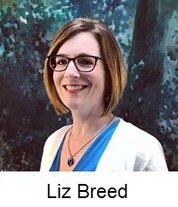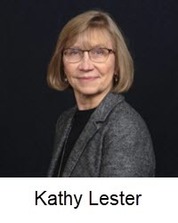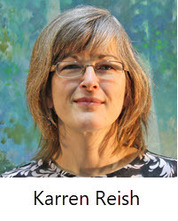 by Randy Riley, State Librarian
A new phone system is being installed
at the Library of Michigan (LM) this fall. As a result, many of the phone numbers
that you use to contact staff no longer will be active. These include the number I've had since October 1, 1989.
A complete list of the LM staff number changes effective October 16 can be found here.
Also on October 16, the reference desk number and statewide services numbers will change to 517-335-1477 and 517-335-1516, respectively (although the statewide services toll-free Michigan number will not change; it remains 877-479-0021). These numbers remain staffed. Feel free to call them anytime if you have difficulty reaching an individual at the LM.
As a rule, I am
not averse to change, but something about switching my phone number after so
many years has spooked me. Why and how can a man get so attached to a telephone
number? After 29 years have I become the “old guy” in the office yelling
at kids to get their ball out of my yard? The natural resistance to change all too
often leads to anxiety. But a phone number? We all are creatures of habit and routine. It takes 20
years or more to develop our adult personalities and along the way we also
develop routines, habits, and behaviors that stay with us a lifetime. “My”
office phone number has for some reason become a comfortable part of my daily work
life. This situation brings me back to what
my dad would tell me as a child: “change is inevitable, except from a vending
machine.” Thanks, Dad.
I can be reached
at 517-335-1517 starting Oct. 16.
|
 by Matt Harmon, Head of Information Technology, Marshall District Library
This year, Marshall District Library (MDL) was prompted to review its security plans and monitoring systems. We decided it was time to upgrade our video camera system and figure out
what the best options were for our facility’s needs. After looking at several security vendors, we elected to install and manage our own video
security system.
To begin with, we considered our video coverage goals:
- The security of our facility and equipment when
the library is closed.
- The monitoring of areas and rooms in the library
building that would not have staff supervision.
- The monitoring of outdoor areas due to traffic incidents around the building.
Our first consideration in the purchase of the system was
the number of cameras and the amount of storage. We wanted full coverage of our 18,000 square
foot facility with storage available for two weeks of video recording. We
looked at whether systems had the ability to expand storage if we elected to
add additional cameras. Our analysis of camera equipment included:
- Pixel Density
- Distance the cameras covered
- Color recording
- Night vision capability for after closing
- Weather resistance for outdoor cameras
The second consideration was the operating system. We looked at whether the system came with a built-in graphic
user interface for accessing and reviewing footage or whether separate software
would need to be installed. We also
wanted to make sure that the software would write over previous recordings
rather than just stopping when storage space was full.
We selected a Samsung Wisenet (SDH-C85100-16) 16 Channel
Super HD DVR Video Security System, available through Amazon.com. This system came with a 2 terabyte hard
drive, an operating system that was managed on the DVR box, and slots for added
storage. The color cameras are
weather-proof, have night vision capabilities, and have the option to add
privacy blocks if we want to block out viewing areas. We also purchased two
additional 6-terabyte hard drives to store video and a computer monitor for viewing footage. The total cost of
this system was $1,554.93.
The final consideration was the wiring and
installation process in our facility. Our technology staff worked with a local
electrician to make sure the cameras would be supported by the ceiling and the
wiring. We chose to use coaxial cable
rather than power-over-ethernet (POE) cable, which is less expensive and does
not require a POE switch. This was a cost savings in terms of
equipment and was an easier set-up. We reviewed the county codes with our
electrician to ensure we were fire resistance compliant. We also worked with a local
contractor to ensure our outdoor cameras were set up properly through the walls
of the library. Set-up was completed by
teams of at least two technology employees working together and took
about 20 hours of staff time over the course of the month. We have been very satisfied with the quality
of our security footage and we learned quite a bit during the installation
process. If you’re interested in talking
about security systems and technology, please email me at harmonm@yourmdl.org.
Stay tuned in November for an article about policies around library security cameras.
|
 by Liz Breed, MeL Coordinator, LM
We are very excited
to announce that the Michigan eLibrary (MeL) will have a completely new look this fall: new logo, new
color scheme, new website. Our new logo will replace the purple and green
version we've had for 12 years and you will see this update everywhere that MeL
can be found including online, in black and white on MeLCat materials, and on
promotional giveaways.
The redesign of the
MeL logo was an intentional process with three goals:
- Update to a more contemporary
look and feel
- Strengthen the visual aspects
of the MeL brand
- Create logo specifications
and usage guidelines to establish consistency
MeL's new colors are
blue, green, and burgundy and each represent something different. Blue is
the base color of the site and ties into the blue used in the Library of
Michigan branding, green represents Library Staff, and burgundy represents
Educators. The "e" and the "L" are positioned to form a
subtle book. There will be versions of this logo in black and white as well as
in singular colors, including green and burgundy for use with our two key
audiences.
For the entire life
of MeL, our emphasis has been to market it broadly to the library community and
all 9 million-plus Michigan residents. But we are shifting our focus away from messaging to residents to focus on the library and education
communities. The changes you see with the MeL logo and website are helping us
visually tailor our educational and marketing materials so they are easy to recognize and fit with the larger
family of MeL offerings.
We hope you like
this updated MeL logo that will help us to reinforce the message that
MeL is dedicated to Supporting Michigan Libraries.
Find more out more on our Get Ready page.
#IMLSGrant
|
 by Jessica Goodrich, Library of Things and Business Outreach Librarian, Capital Area District Library
You likely have heard of libraries worldwide joining the
growing trend of offering a Library of Things. These collections give patrons
access to non-traditional items, from sewing machines, metal detectors, Wi-Fi
hotspots, to energy meters, board games, and more.
In 2016, Capital Area District Libraries (CADL) dedicated
$5,000 to explore starting a Library of Things. Lots of research was performed
before we started. Some selections were Things that circulated well, according to other libraries; others were based on CADL staff ideas. Every item was
researched for the best of what we could offer, afford, and circulate. Much of
the research was performed internally, but when we could, we contacted local
businesses.
Within the first four months, the Things in the small collection
had already circulated more than 500 times.
The response from patrons was amazing,
from shocked surprise to absolute delight. Since that first launch, we have
consistently grown our collection.
Things have changed quite a bit in the past two years. Much
has been learned, including that apparently everyone wants to borrow a metal
detector (CADL has 15 now and in warmer months, there's a wait list). Our
selection policy has formed and solidified slowly as the collection grows.
Generally, items selected offer some educational benefit, a new experience, or
are considered high-cost infrequently used items that benefit patrons. Other
items encourage community and family socialization. There are exceptions, as
needed, sometimes from patron requests or popularity of items.
The main question about the collection from just about
everyone is theft. People are amazed things come back. It helps that we have
a different fine structure for our Library of Things collection, but things
come back better than expected. In most cases, things are clean, packed well,
and include all their parts.
There have been challenges and mistakes. At first each Thing had a home
library, but still was requestable at any branch. Now everything is centralized, with
each item being cleaned and maintained each time it circulates. Research and
referrals have served us well. For some Things, partnerships have been formed
with local businesses that help to us maintain certain offerings.
While the collection has been a
big hit with current users, the unique assortment also reinforces CADL’s brand
slogan of "Everything Right Here." View CADL’s Library of
Things collection at www.cadl.org/things.
|
 by Janice Murphy, Reference Librarian, LM
Maestro, if you please…. Hear that drum roll? That, my friends, is the sound of the Michigan Legislative Biography
Database bursting onto the digital stage. Well, maybe I’m the
only one who can hear it, after pushing from the wings like a stage mother for
some time.
If you have ever had a burning desire to see which
representatives lived in your county or district, this should help you identify
them. District names and their makeup have changed over time but the name
of the home county stands firm. Need to know which committees someone
served on? Or who served on a certain committee over time? How many
women have served in the legislature and who were they? Who was the first
African American in the state House of Representatives? Who served the
most terms? Well, finding that information just became easier. The
answers to the last three questions are: 191, Rep. William W. Ferguson and
Marquette’s Dominic Jacobetti (with 21 sessions, all in the House).
The LM has created a searchable database of
biographical information on each person who has served the state of Michigan on
the state’s council or in the legislature since 1835. It is freely
available to the public. Of course, with more than 5,400 people on the roster, it is an ongoing project to
populate each of the 20 plus fields of information. Some legislators were
not self-promoters and make it difficult to find basic data, even their party
affiliation, but staff, and some dedicated volunteers, are doing their best to
fill in the blanks. With the coming elections, the list will grow.
If you have questions or comments, or would like to be a
contributor to the process, please contact Janice Murphy at murphyj3@michigan.gov or use the
Suggestions/Comments tool in the database.
|
 by Kathy Lester, School Librarian, East Middle School and Plymouth-Canton Community Schools
In 2016, after months of input from the public and education stakeholders, the Michigan Department of Education (MDE) unveiled the Top 10 in 10 Years Goals and Strategies to help Michigan become a top 10 education state in 10 years. Since that time, MDE has worked to align other educational programs to the Top 10 in 10 initiative. This includes Michigan’s implementation plan (November 2017) for the Every Student Succeeds Act (ESSA).
Many in the library community know that the American Library Association (ALA) and the American Association for School Librarians (AASL) worked successfully with U.S. legislators to include school libraries/librarians in the reauthorization of the No Child Left Behind Act which became the Every Student Succeeds Act (ESSA). This law left it up to each state to determine the details of how the new law would be implemented in their state.
Michigan’s ESSA implementation plan includes a measure “K-8 Access to Librarians/Media Specialists” that will be part of a new ESSA accountability indicator of School Quality and Student Success. Each school will have this new measure included as part of the School Index available on MDE’s Parent Dashboard. The librarian measure was introduced to align with the Top 10 in 10 Goal 2.7a to ensure that all students have access to an appropriately staffed school library.
The MDE has published several documents to assist schools in determining how to ‘appropriately staff’ a school library. These include a “quick sheet” on Library Media Placements and two additional memos (1) (2) These emphasize the critical role of school libraries/librarians in education and clarify that school libraries should be staffed with a teacher certified school librarian. The MDE also published a memo to specify that only teachers with Library Media (ND) teacher certification would be part of the calculation for the ESSA indicator "K-8 Access to Librarian/Media Specialist."
Additionally, the MDE Early Literacy initiative has aligned with essential literacy practices that were developed by the General Education Leadership Network (GELN). These practices are intended to be minimum prescribed practices for literacy which are especially important as Michigan’s new Read by Grade Three law begins to be implemented. The Essential School-Wide and Center-Wide Practices in Literacy document includes school librarians/libraries as part of three of the ten school-wide essential practices.
These MDE efforts recognize that effective school library programs staffed by certified school librarians play a vital role in our schools as documented in years of studies. They also align with the State Board of Education’s Statement on School Libraries which calls for all of Michigan’s students to have access to a school library with “resources, programming and certified staff.” This statement also calls for school districts to use the School Libraries in the 21st Century (SL 21) Program: Qualitative Benchmarks for Michigan School Libraries (which were developed by the LM’s School Library Workgroup) to measure the quality of the library in their schools.
The MDE has, through its many initiatives, affirmed that all of Michigan’s students deserve equitable access to the essential services of an effective school library program.
|
 by Pete Sneathen, I.T. Manager, Herrick District Library
It is a cold January morning. As I enter into the I.T. offices, I notice a "System Compromise" alert in our logging and Security Information and Event Management (SIEM) solution: AlienVault, conveniently displayed on our 55" wall mounted TV. I know, I know… this is the point you’re asking
yourself, “Why didn’t he get an email alert? Seems kind of silly he would have to go into work to look at a TV
display to see this type of alert!” And you would be right. In fact, the solution does email us… but I
thought having the reader visualize a alert would read
better.
So, I quickly boot up my laptop, log-in to the network, and log into the AlienVault web portal. In just a few clicks I can identify the
compromised system. But hold up, this is
strange... AlienVault is telling me that the compromise is due to a "very old" non-malicious malware. So old, my
immediate assumption is that it is probably a false positive.
So here is where I should probably pause and tell you a bit
about myself and why I'm so skeptical in this situation. I have been in I.T. Management for more than 25
years, and for five of those years I was in technical sales for logging and SIEM
solutions. I am all too familiar with the fact that most logging and SIEM
solutions are better at presenting you with false positives than valid data
that needs to be acted upon.
Where was I? Oh, yes, "non-malicious malware." One of my
co-workers performs a system malware scan using Malwarebytes and I'll be danged. It finds the same malware. In the end AlienVault was able to identify an
antiquated malware just by listening to the network traffic and identifying the
traffic pattern of this malware software, something that our anti-virus missed. Using Malwarebytes, my
co-worker removes the malware from the system.
Since then AlienVault has identified several non-malicious
cookies and innocent tracking browser plugins. Like most I.T. professionals, I put a high priority on network and
system security, but I can sleep a little better at night knowing AlienVault is
monitoring our network and system activity. So, if you are in the market for an
affordable logging and SIEM solution, I highly recommend you consider
AlienVault.
|
 by Karren Reish, Library Grants Coordinator, LM
The LM is launching
a circulating Library Science Collection for Michigan librarians. We are
collecting materials for public, academic, and school librarians. We also are collecting on a wide range of library topics. Look here if you need information on:
- managing technology in libraries
- supervising staff or volunteers
- developing
your library collection
- licensing digital content
- improving story time
- fundraising to enhance your budget
- facilities management
- serving special
populations of patrons
- standards for school libraries, etc.
Our focus is the range of topics necessary for professional programming,
collections and management in libraries.
For example, some new public library titles are The librarian's guide to homelessness: an empathy-driven approach to
solving problems, preventing conflict, and serving everyone by Ryan Dowd; Creating and managing the full-service
homework center by Cindy Mediavilla. In the school library sphere, we have
the new National school library standards
for learners, school librarians, and school libraries by American
Association of School Librarians and Managing
the successful school library: strategic planning and reflective practice by
Lesley S.J. Farmer. For academic librarians, take a look at Learner-centered pedagogy: principles and
practice by Kevin Michael Klipfel and Dani Brecher Cook and Licensing digital content: a practical guide
for librarians by Lesley Ellen Harris.
Anyone can borrow materials through MeLCat or interlibrary loan. To find materials, search ANSWER, the Library of Michigan catalog by topic, or browse the Library Science Collection link (#3).
Use the collection to improve your services, brush up on a topic or learn a new
skill. Pass the word about it to your colleagues! If you see something we
should have in the collection, send us a suggestion to reishk@michigan.gov. We will continue to purchase materials for
the collection so check back often.
This collection is made possible in part by the Institute of Museum and
Library Services.
|

Every year, the Library
of Michigan selects up to twenty of the most notable books, either written by a
Michigan resident or about Michigan or the Great Lakes. Each selected title
speaks to our state’s rich cultural, historical, and literary heritage and proves
without a doubt that some of the greatest stories are found in the Great Lakes
State.
The Library of Michigan Foundation has
been raising funds to help support the Michigan Notable Books program for over
25 years. The program has gained enormous respect throughout the state, with
readers everywhere excitedly waiting for the publication of this important
literary list each year. To date, close to 500 works have been selected and
honored as a Michigan Notable Book title.
In addition to the 2018
Michigan Notable Books celebration, Night
for Notables, held last spring in Lansing, the Foundation this fall will
co-host with the Kalamazoo Public Library a regional, celebratory event for the
people of the Kalamazoo area and surrounding communities.
Many current and past Notable Book authors will
be there to personally autograph their books while talking with guests about
their work. Don’t miss this opportunity to meet these award-winning authors
including: Bonnie Jo Campbell, Wade Rouse writing as Viola Shipman,
Karen Dionne, William Rapai, Stephen Mack Jones, Joel Stone, Michael G. Smith,
Amy Emberling and Frank Carollo, Cindy Hunter Morgan.
Please join the Library of Michigan Foundation at the beautiful Kalamazoo Public Library on Thursday, October 18th at 7 p.m. for an enjoyable evening to celebrate the Michigan Notable
Books program with many “Notable” authors and fellow book-lovers. This event is
free to the public thanks to Kalamazoo Public Library and many generous donors
to the Library of Michigan Foundation.
Hors d’oeuvres and other delicious refreshments
will be served. Space is limited so please register today on the Kalamazoo Public
Library event website kpl.gov/notables.
|
|
|